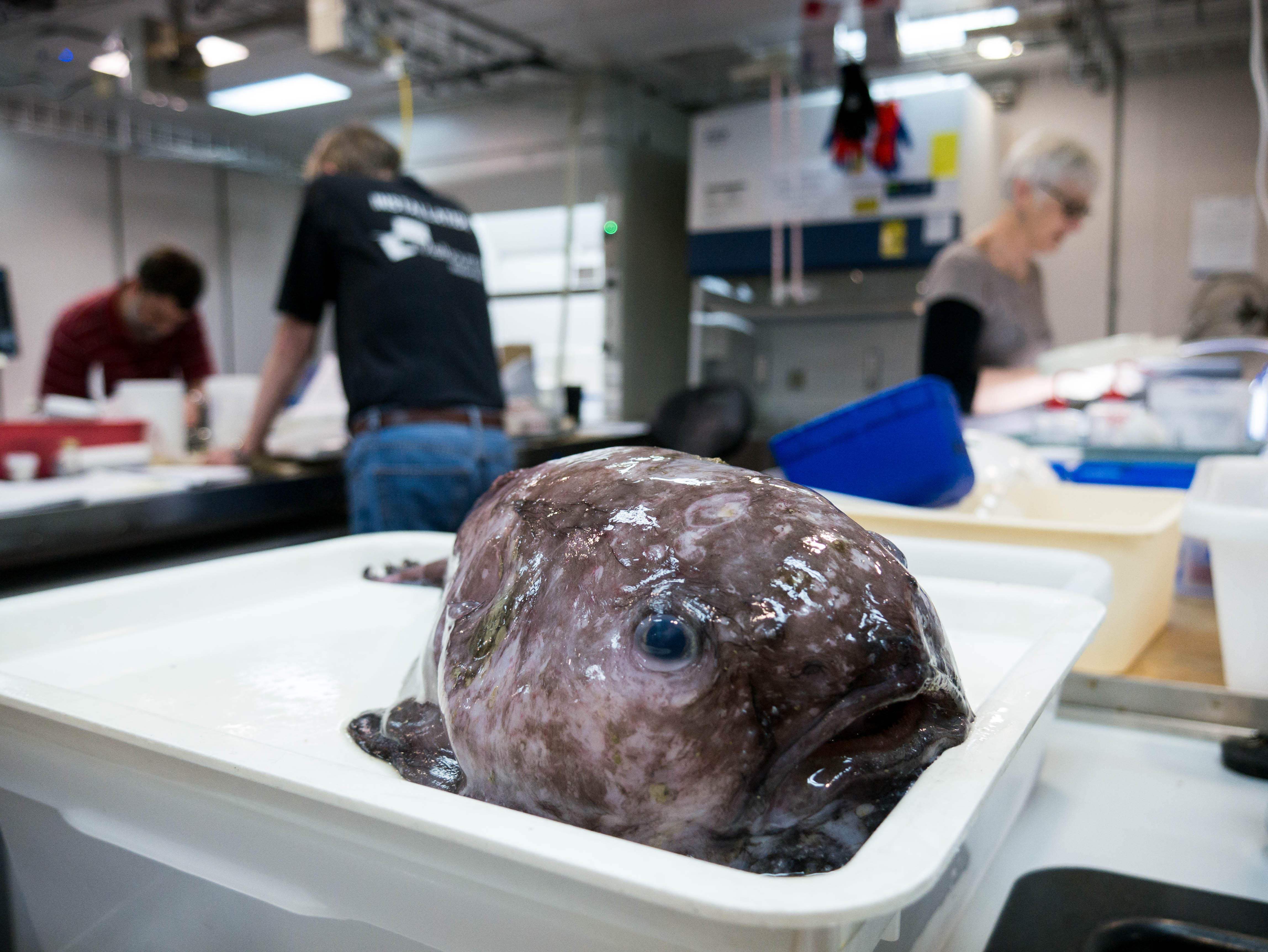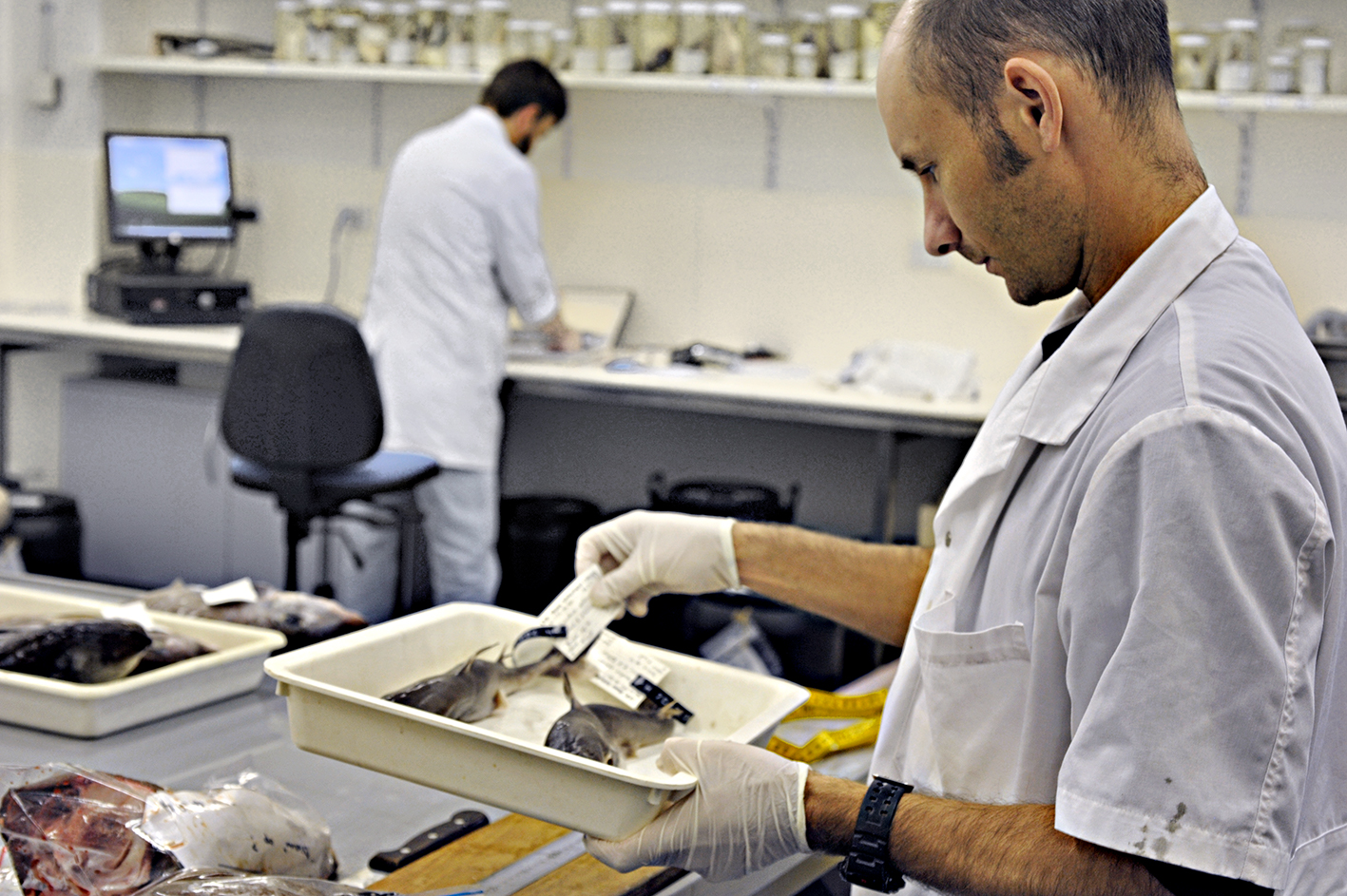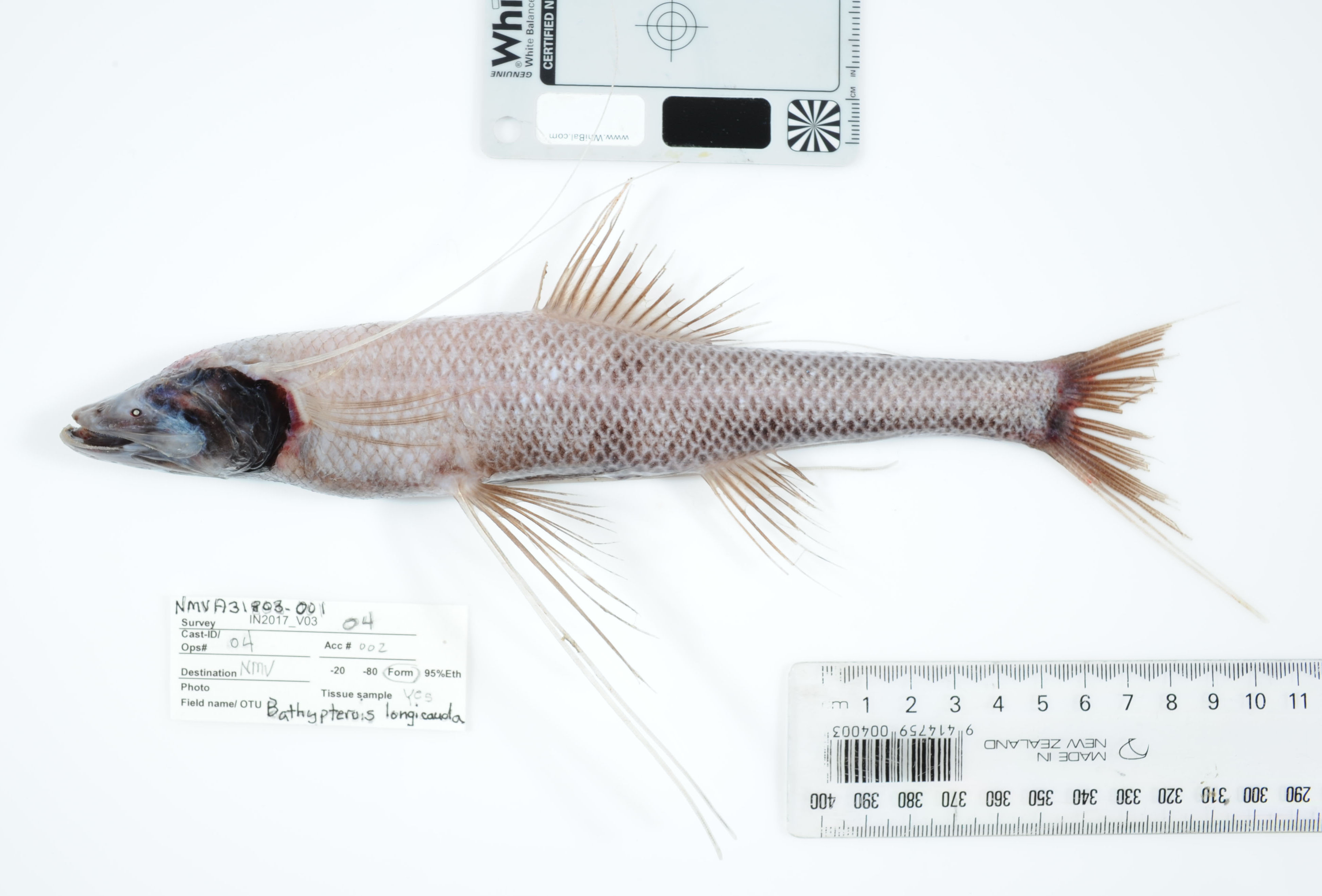Challenging diversity
 More than 5,000 species of fishes are currently known from Australian waters with more than one new species being described (named) every month.
More than 5,000 species of fishes are currently known from Australian waters with more than one new species being described (named) every month.
This rich diversity is a challenge for researchers, especially as some of our waters are yet to be sampled.
An active reference collection
The ANFC is a resource for many fields of science, providing a record of diversity prior to, and during recent large-scale human impacts, such as fishing and climate change.
Our specimens provide the physical evidence of a species occurring in a specific place at a specific time.
 Scientists from around the world visit the collection and borrow material for examination and to make comparisons with fauna from other regions.
Scientists from around the world visit the collection and borrow material for examination and to make comparisons with fauna from other regions.
This may lead to the recognition and description of new species, as well as an improved understanding of where species occur now and where they have occurred in the past.
Describing new species
To describe new species, researchers use specimens to examine variation within and between species.
This involves, for example, taking measurements (e.g. relative sizes of the head or eye), counting features (e.g. numbers of fin spines and rays), examining colour and undertaking genetic analyses.
 With some species having multiple historic common names and sometimes multiple scientific names, it can be difficult determining which species name refers to a particular organism or if a particular specimen is a new species.
With some species having multiple historic common names and sometimes multiple scientific names, it can be difficult determining which species name refers to a particular organism or if a particular specimen is a new species.
An active reference collection like the ANFC is also used to ascertain what organism was being described by earlier authors and can help resolve confusion.
Active and well curated collections are therefore crucial to assist in this challenging process, supporting the taxonomy that leads to the recognition and documenting of diversity.
Challenging diversity
More than 5,000 species of fishes are currently known from Australian waters with more than one new species being described (named) every month.
This rich diversity is a challenge for researchers, especially as some of our waters are yet to be sampled.
An active reference collection
The ANFC is a resource for many fields of science, providing a record of diversity prior to, and during recent large-scale human impacts, such as fishing and climate change.
Our specimens provide the physical evidence of a species occurring in a specific place at a specific time.
Scientists from around the world visit the collection and borrow material for examination and to make comparisons with fauna from other regions.
This may lead to the recognition and description of new species, as well as an improved understanding of where species occur now and where they have occurred in the past.
Describing new species
To describe new species, researchers use specimens to examine variation within and between species.
This involves, for example, taking measurements (e.g. relative sizes of the head or eye), counting features (e.g. numbers of fin spines and rays), examining colour and undertaking genetic analyses.
With some species having multiple historic common names and sometimes multiple scientific names, it can be difficult determining which species name refers to a particular organism or if a particular specimen is a new species.
An active reference collection like the ANFC is also used to ascertain what organism was being described by earlier authors and can help resolve confusion.
Active and well curated collections are therefore crucial to assist in this challenging process, supporting the taxonomy that leads to the recognition and documenting of diversity.
